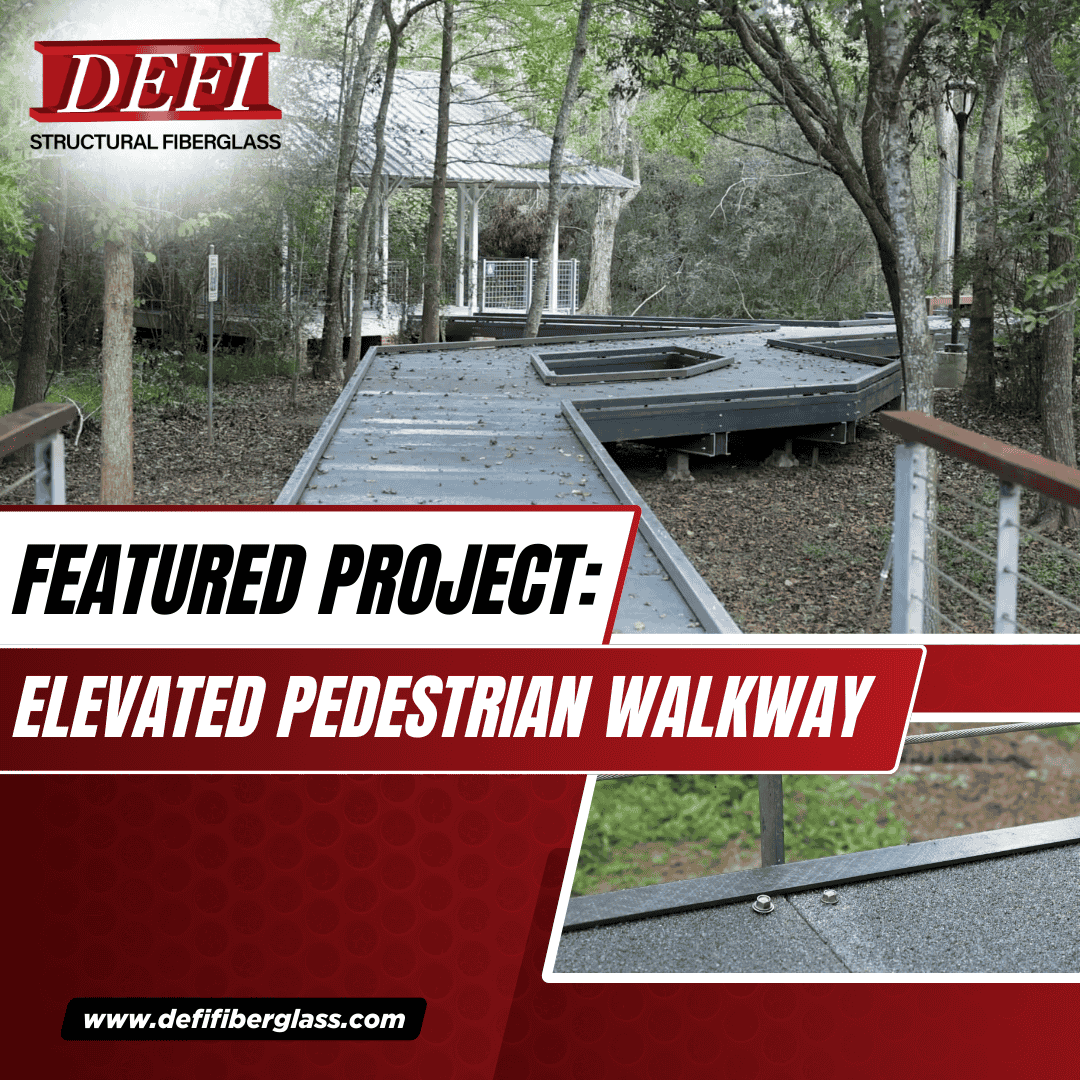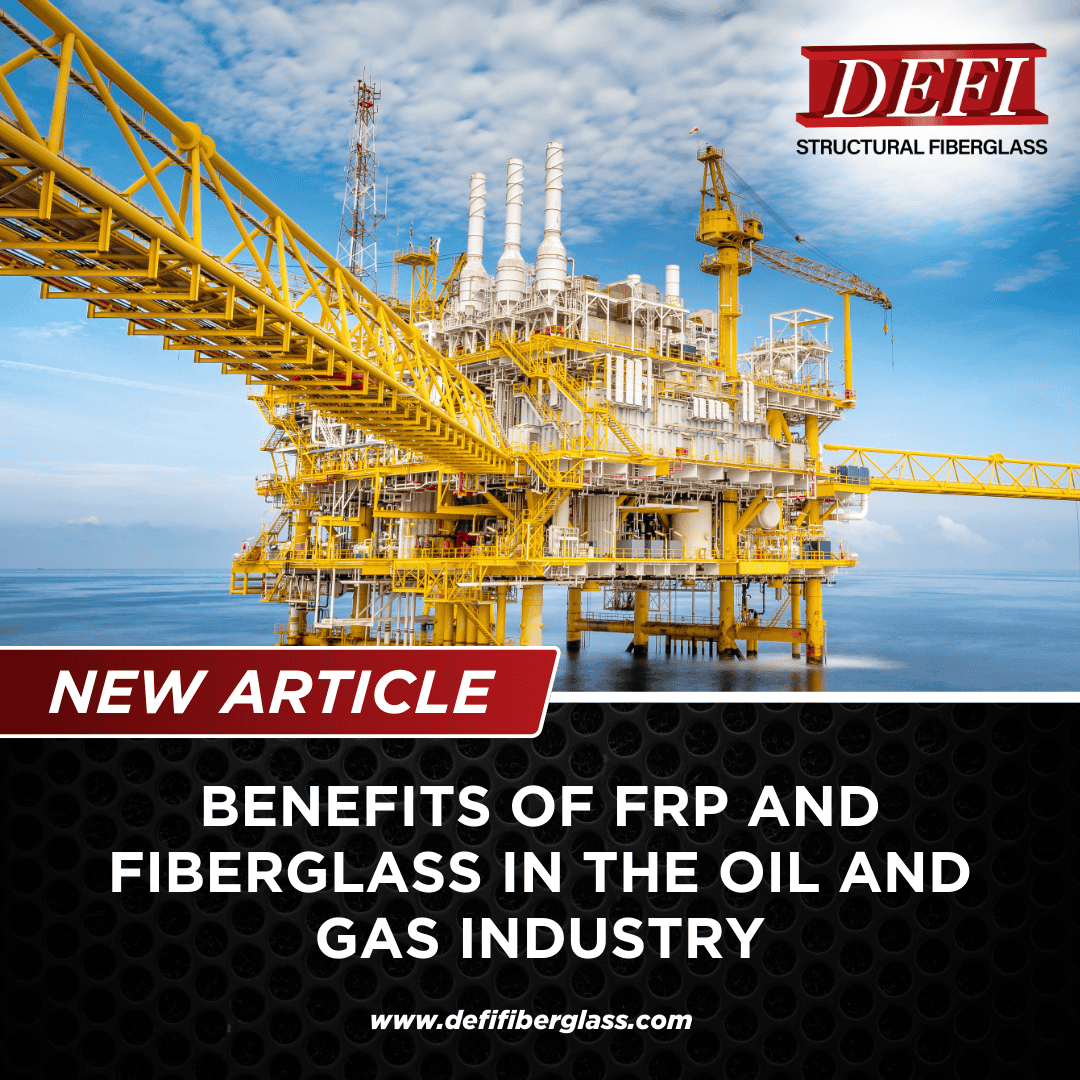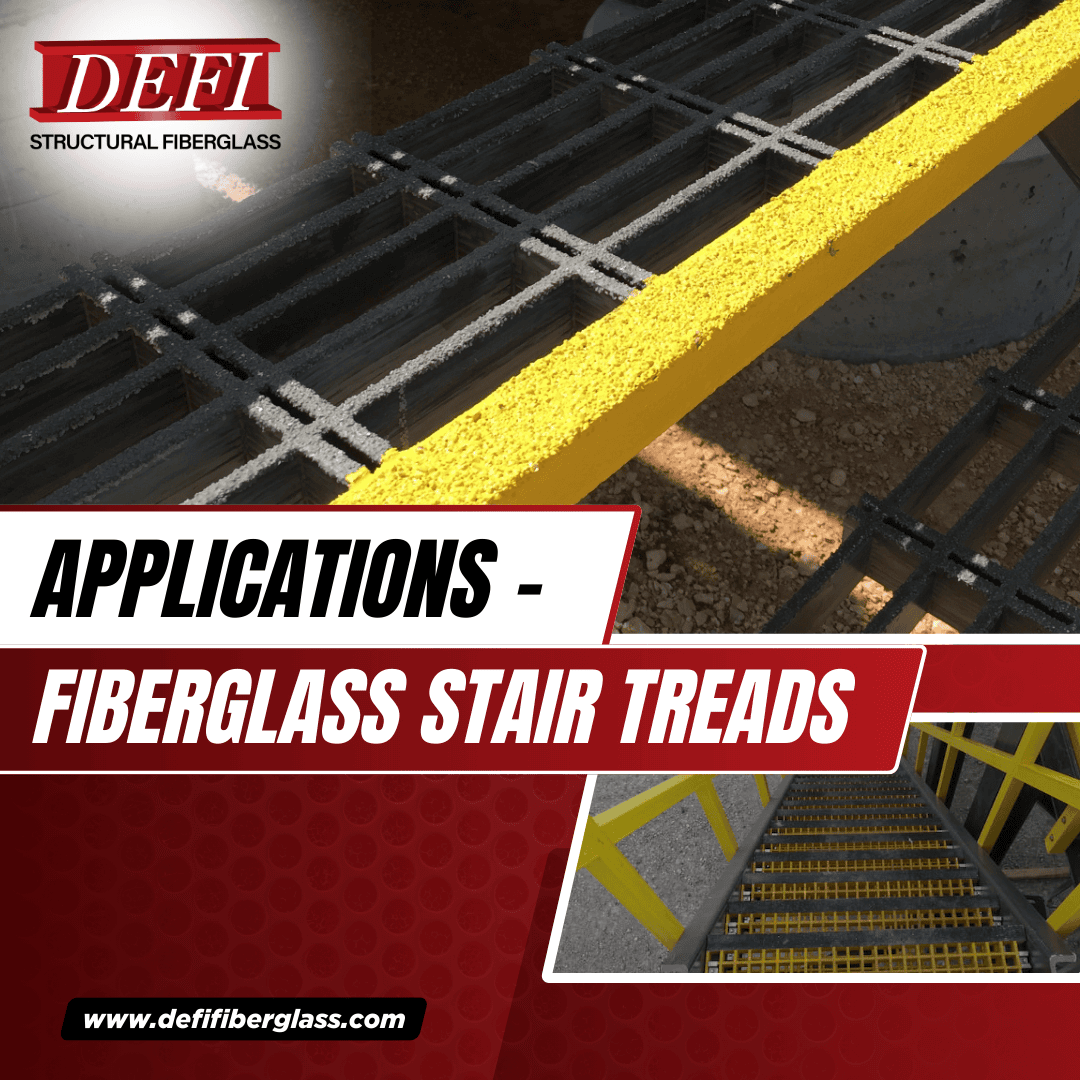A: Typically, FRP stands for fiber reinforced plastic and the FRP beams are normally referred to as wide flange beams, channels, and H beams. Those typical applications are for walkways, catwalks, and anywhere where corrosion resistance is needed for an application vs. traditional materials.
FRP has gone from a relatively unknown product a few decades ago, to being a formidable contender to traditional building materials. Wood, aluminum, and steel simply can’t match the strength, durability, and long-term value of fiber reinforced plastic. FRP beams are just one major example of how it is changing the industry
More recently, over the last five years, economic trade policies such as the steel tariffs and inflation have impacted construction. The price of steel, aluminum, and lumber have all seen an astronomical rise in cost.
FRP has not gotten through the pandemic and supply chain issues unscathed either as prices have increased with inflation. However, where FRP holds an advantage is that the ownership cost of fiber reinforced plastic is still far lower than steel or wood.
Steel corrodes with simple exposure to moisture and the rate of degradation spikes when used in a corrosive environment. Wood is not reliable for the long term as it rots with moisture, warps with heat, and is susceptible to termites and fire.
That leaves FRP in a very comfortable position—even in this struggling pandemic plagued economy. FRP is setting the standards for safety in all industries with all of its outstanding features. The lion’s share of FRP manufactured for all industries is comprised mainly of pultruded grating and FRP beams.
So what exactly is this miracle material and why is its use spreading like wildfire across various sectors? The quick answer is simple—it’s simply better all around.
What Are FRP Beams Made Of?
To understand why the use of FRP beams has exploded over the last decade you have to understand what FRP is. FRP as mentioned is short for fiber reinforced plastic—but that doesn’t answer what it’s made of.
FRP is a composite made up of a thermosetting resin and fiberglass, which are very thin fibers of glass, hence the name. These glass fibers and the various resins it is combined with are what make up the base ingredients of FRP products.
The resins are what contribute to the various environmental and chemical resistance qualities. They also act as the binder for the glass fibers within the structural layer. DEFI products generally are comprised of three layers also referred to as laminates.
- Chemical Barrier Layer (CBL): This layer provides chemical resistance that gives FRP products their anti-corrosive characteristic
- Structural Layer: For temperature resistance and structural integrity
- Topcoat (Surface Veil): Environmental and temperature resistance
As you can see, the biggest selling point in FRP lies in the structural strength and durability it exhibits in any application.
FRP beams exhibit all of the traits that make FRP so durable. Corrosion resistance, lightweight, impact resistance, fire resistance, and more. The best part that’s often overlooked, is the flexibility of FRP beams—they can be customized to the needs of any application.
The FRP Advantage In All Sectors
The FRP beams we manufacture are mainly used to support structures used within large industrial operations. Environments such as chemical plants, automobile manufacturers, meat processing plants, and construction sites.
These beams are as strong as steel while weighing in at only a fraction of their steel counterpart. This means savings on so many angles. Installation is completed with simple tools and there’s no heavy machinery needed to lift FRP beams either. So, right out of the gate, FRP is saving businesses money and time, which we know time is money too. But that’s just scratching the surface of the benefits of using FRP in structural applications.
Why Businesses Are Transitioning To FRP
A business at its core must remain profitable to survive. Aside from smart business decisions and good marketing, there must be efficient manufacturing. There are several areas where you can boost efficiency in manufacturing— workflow processes, procurement of resources, and infrastructure. Those are three of the biggest shortcomings of businesses that fail.
All go hand in hand, but the infrastructure is usually what can eat up operating budgets if not properly handled. Centering your infrastructure around FRP whenever possible is a crucial key to a lean approach. There’s several key benefits that FRP beams and other FRP products give a business. Here’s just a few of those benefits that are causing FRP use to skyrocket over the last five years.
Unlimited Potential
The biggest limitation business are faced with when using steel, is that structure design is limited due to the weight. Compromises have to be made as complex designs use a lot of steel and eventually the design costs more in installation.
Because steel is so heavy, a large design often requires pouring thick concrete foundations for reinforcement. That’s an expensive task in and of itself, in addition to the structure construction cost.
FRP is so lightweight that it makes design potential free from constraints. You can build out your structure exactly as you envision it. From a walkway to a ladder and cage system, or trench grating—there’s no limits.
Logistical Savings
One factor many overlook when using steel is the cost to transport the steel components to your project site. It gets extremely expensive very fast, therefore, once again—you have to limit your design. Since fiberglass is so light the cargo is a fraction of what steel costs. Additionally, it’s easy to carry it around your construction site. No heavy flatbed trucks needed, no cranes either.
Unmatched Mechanical Strength
This is probably the most unique feature of FRP, specifically FRP beams. As light as it is, one would think that it’s not as tough as steel. Ironically it’s more durable than steel as it outclasses steel handily in terms of durability, mechanical strength, and resistance to extreme conditions.
Superior Corrosive Resistance
FRP is not affected by chemicals, saltwater, acid, and other corrosives. Metal would be shot after a mere week of exposure. Wood would warp and rot, steel would corrode, but FRP is unfazed. This is why it’s heavily used for outdoor structures in chemical plants, refineries, marine applications, and other similar environments.
Overlooked Benefits
Often buyers are so focused on the big money-saving benefits they forget that there’s some unsung benefits as well. These may seem minor, but in the big picture, they are huge advantages.
- Fire Resistant— Businesses lose millions of infrastructure in a workplace fire. Fortunately with FRP structures, they can withstand the heat and destructive properties of fire.
- Non-Conductive— When deployed in electrical environments with a high risk of electric shock around metal walkways and stairs etc. FRP shines. It cannot conduct electricity so if there’s an accident, at least the walkways and structures can’t be electrocuted.
- Safety Features— Additionally FRP can have textures baked right into the structural pieces making non-slip an easy built-in feature.
Upgrade Your Structures With FRP Beams From DEFI
No matter what kind of project you have in the works, DEFI can save you money with our customizable FRP structures and installation.
Contact us today to see what we can build for your business!



